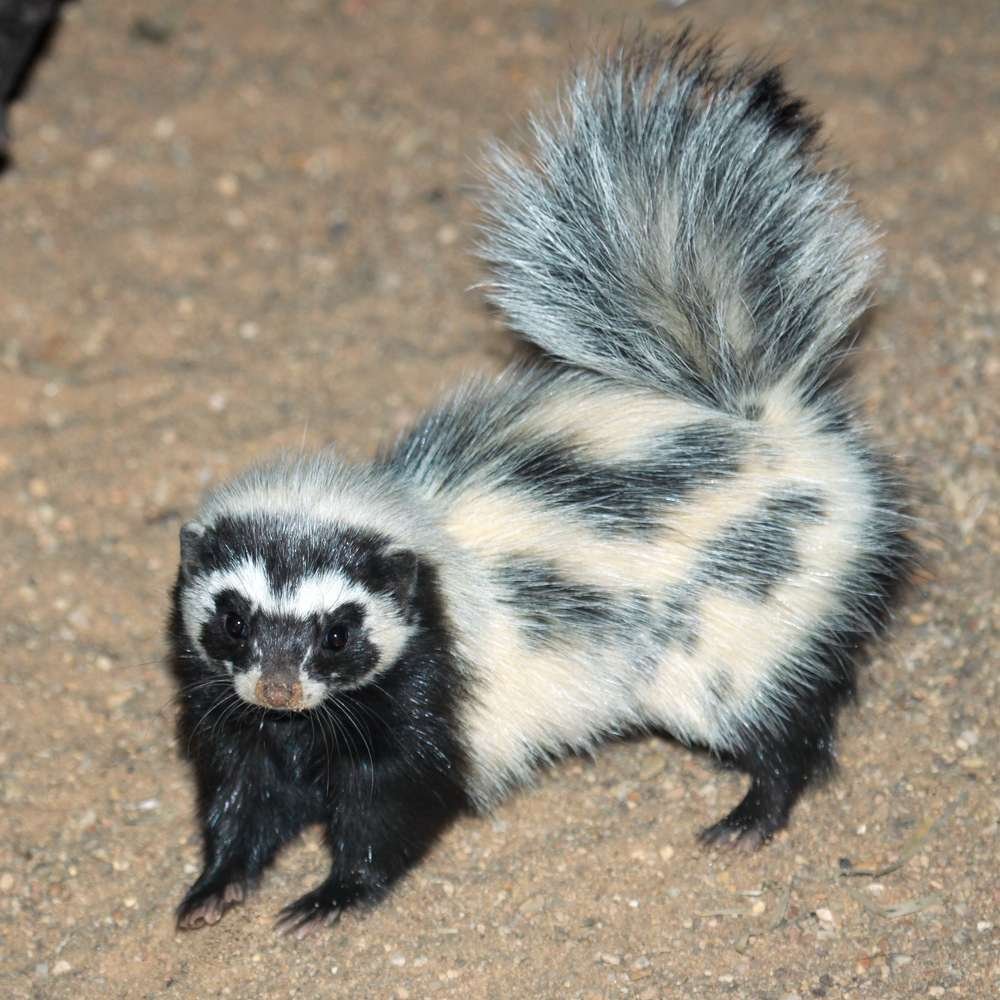Striped Polecat
( African polecat, zorilla, Cape polecat or African skunk )
- Ictonyx striatus
- IUCN Status: Least Concern
- Trend: decreasing

- Kingdom: Animalia
- Phylum: Chordata
- Class: Mammalia
- Order: Carnivora
- Family: Mustelidae
- Genus: Ictonyx
Share:
General Information
The striped polecat resembles a skunk but is a whole different species. It’s other name “Zorilla” comes from the spanish word ‘Zorro’ which means fox.
Fun Facts!
Description
- Length: 60–70 cm
- Weight: 0.6 to 1.3 kg
Ecology and Behaviour
It produces a foul-smelling substance in its anal glands, which it can squirt out if it is threatened by predators or other dangers. Obviously it is a nocturnal animal, and it feeds on rodents, eggs, reptiles and insects. It spends the day resting in its burrow, which is found in the open country or savanna.
Striped polecats have been known to communicate with each other using myriad verbal signals and calls. Growls act as a warning to possible predators, competitors, or other enemies to back off. High-pitched screams have been observed as signifying situations of high aggression or accompanying the spraying of anal emissions. An undulating high- to low-pitched scream has been used to convey surrender or submission to an adversary. This call has been noted to accompany the subsequent release of the loser. Conversely, a quieter undulating call has been interpreted as functioning as a friendly salutation. Mating calls are common forms of communication between the sexes. Young polecats often have a specific set of calls and signals, used in adolescence, either signifying distress or joy depending on if the mother is absent or present.
The striped polecat is an aggressive and very territorial animal. It marks its territory with its feces and through an anal spray. The spray serves as a defense against predators, in a similar manner to skunks. The spray, released by anal stink glands, temporarily blinds their adversaries and irritates the mucous membranes, resulting in an intense burning sensation. Before spraying the opponent with this noxious fluid, the striped polecat often takes a threat stance with its back arched, rear end facing the opponent, and tail straight up in the air.
Conservation
It is listed as “Least concern” on the IUCN Red list.
Distribution and Habitat
The striped polecat favour dry open country and light woodland, where it can feed on various small rodents, snakes, birds, amphibians, and insects. They are a rare sight and have been spotted in the kafue national park.
Interaction with humans
No donation to this project yet.
| M | T | W | T | F | S | S |
|---|---|---|---|---|---|---|
| 1 | 2 | 3 | 4 | 5 | 6 | 7 |
| 8 | 9 | 10 | 11 | 12 | 13 | 14 |
| 15 | 16 | 17 | 18 | 19 | 20 | 21 |
| 22 | 23 | 24 | 25 | 26 | 27 | 28 |
| 29 | 30 | 31 | ||||


